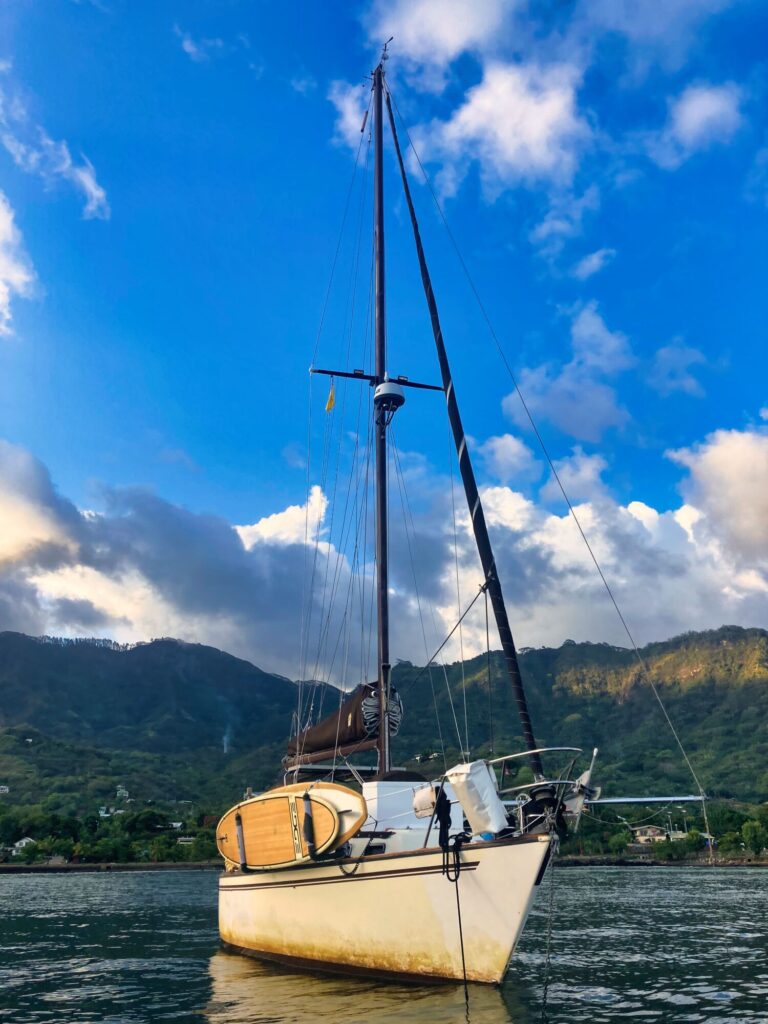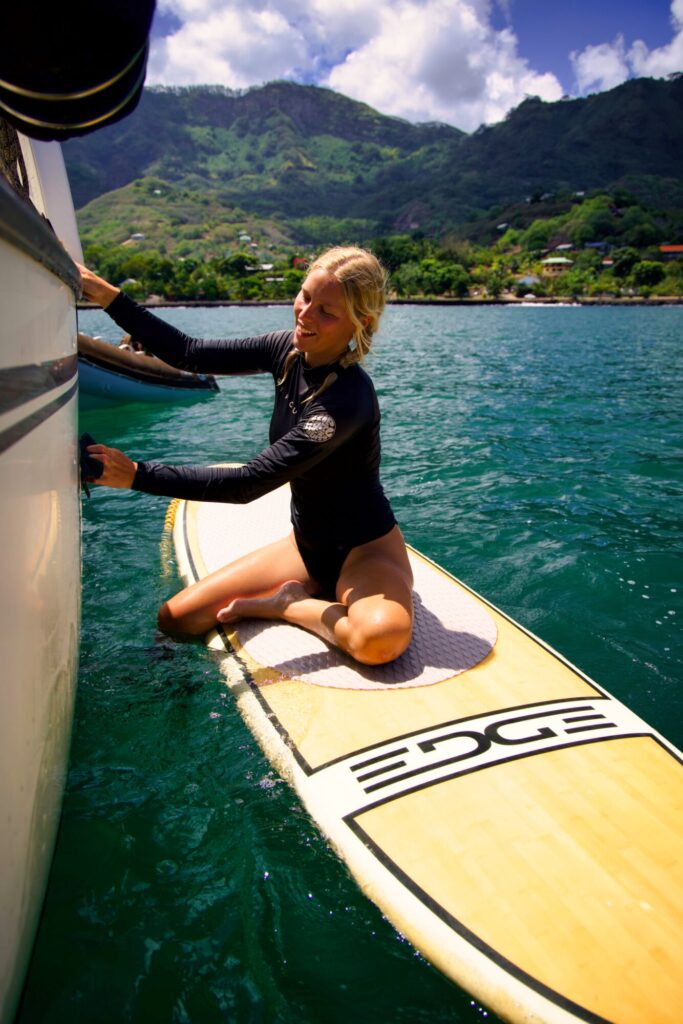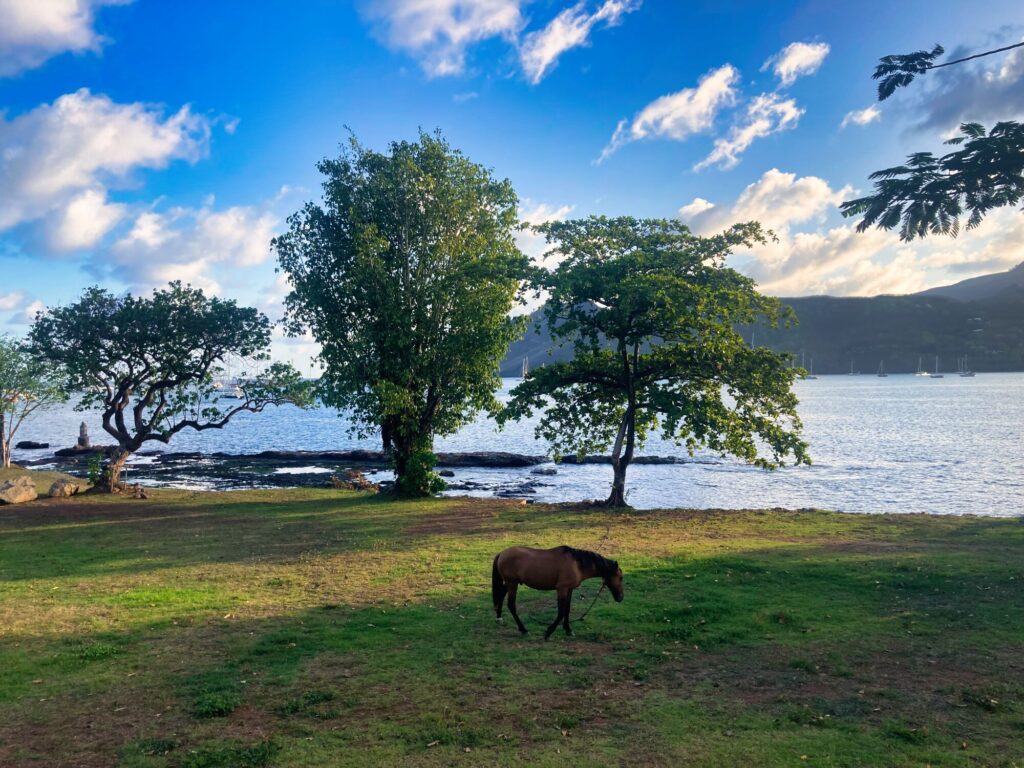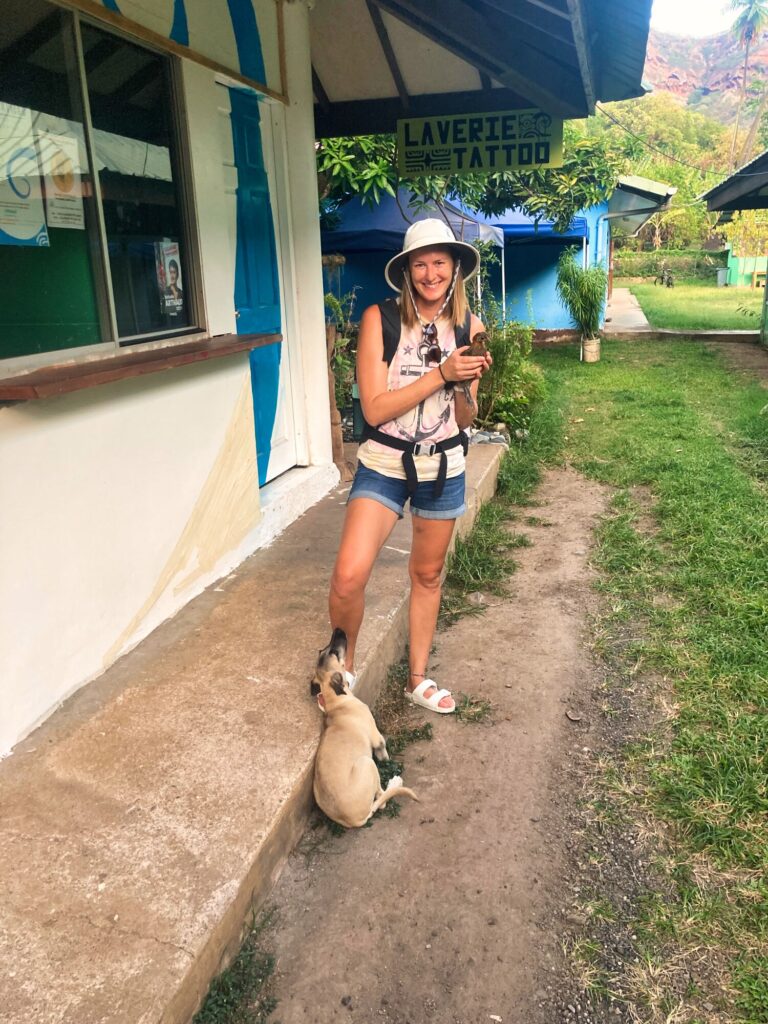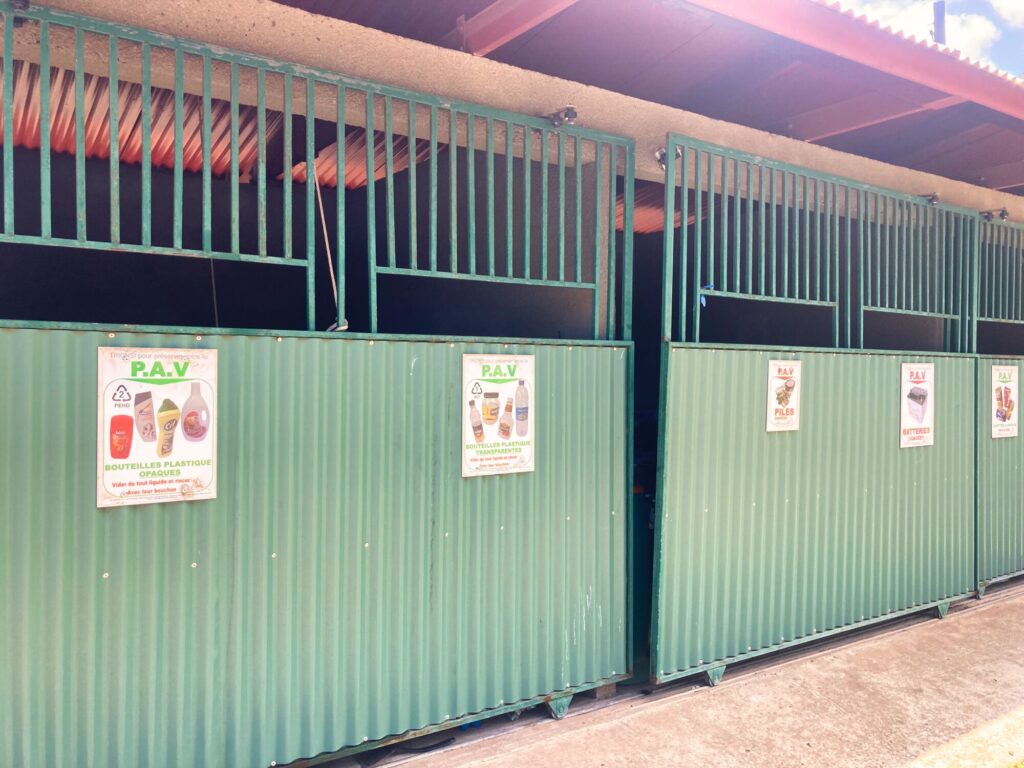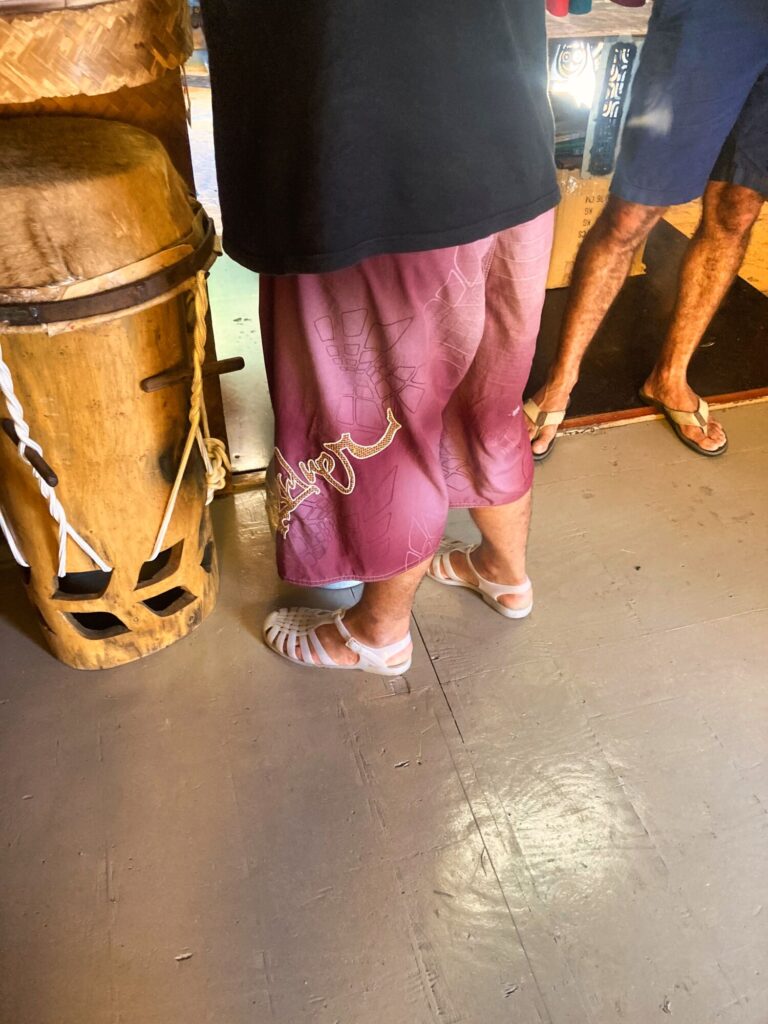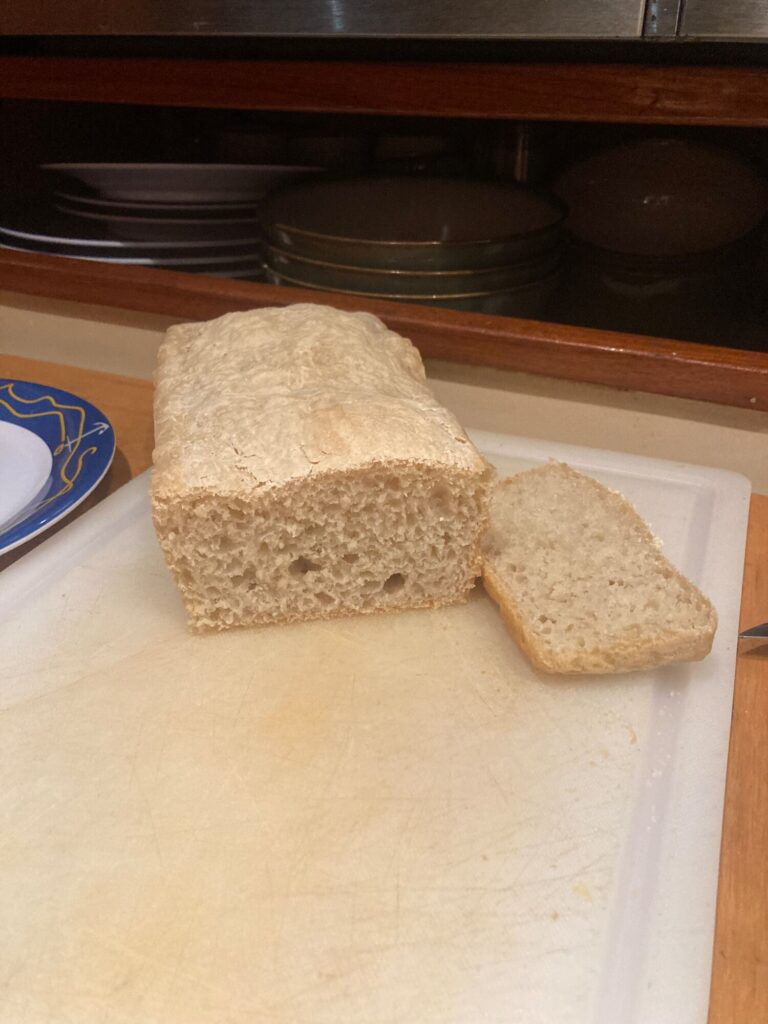After our first full night of sleeping while at anchor, it was time to get to work. I started deep cleaning the interior while Martin and Simone scrubbed the hull, removing the marine growth from below the water line and stains and scum from above. Eitan headed to shore to drop off laundry, grab SIM cards, and figure out the check-in process to get us stamped into the country. Luckily, there was a one-stop shop for most of our needs onshore; Nuku Hiva Yacht Service is run by an American named Kevin who provides just about everything most cruisers could need, for a price. Not yet familiar with the conversion rate, the 1,700 francs per kilo of laundry didn’t seem too bad until we got the bill and wound up spending almost $200 on laundry, which still smelled a bit funky from being line-dried in a humid environment.
Eitan returned with our SIM cards and news that the customs official was not around today… because of island time! We wouldn’t be able to check-in for a couple more days but immigration was clearly not very strict in this part of the world and we were welcome to do as we please on the island in the meantime. Once we were done cleaning and getting things organized and stowed away after the passage, we all headed into town to explore a little and look for some fresh provisions. Eitan and I meandered around a handful of the small roads to get a feeling for the vibe of the culture and community. Horses seemed to provide a secondary form of transportation for the locals and when they weren’t in use, grazed freely or were tethered to a tree or stake. There were also dogs and chickens roaming the streets. I now began to understand why the animal sidekick in Moana was a rooster.
After an initial exploration of the town, we stopped by two of the grocery stores (called magasins) to see what kind of provisions were available. There were the standard products like Nutella, Nescafe, and Coca-Cola whose prices were all about 4-times the cost of the same items in Mexico. There were also a handful of goods that I wasn’t used to seeing in the Mexican markets like baguettes, brie cheese, and escargot. It was clear the French had quite an influence on the local tastes and we already missed the days of tortilla chips and refried beans.
Despite the number of chickens roaming the island, eggs didn’t seem to exist at any of the stores we visited. The price of chicken was also outrageous since it was imported from New Zealand. Our friends on SV Bula said they almost accidentally bought a $200 package of chicken thighs. It seems that most of the locals get their chicken and meats, like beef and goat, from the animals that roamed the island. The dairy product selection was quite sad and common items like yogurt, cream cheese, and sour cream weren’t available at all, and besides brie, the only other cheese was called emmental. Butter was expensive and most stores only stock canned salted butter, which is perfect for popcorn but a bit too salty for anything else.
The magazines also did not sell fresh produce other than potatoes, onions, and garlic. Luckily, we could buy fresh produce at a small farmer market set up near the dock. I picked up some mangoes, avocados, and banana but didn’t recognize about half of the fruits there. Martin picked out a, new to me, fruit called a pomelo which is a citrus, larger than a grapefruit and delicious, albeit a bit messy to peel. The vegetable selection was limited to zucchini and sometimes a few limp carrots.
After weeks at sea, I was excited to sink my teeth into some juicy fruit as soon as we got back to the boat. I selected the ripest of the mangos we had purchase and began cutting it open. As I separated the flesh from the pit, I was disgusted to find tiny, wiggling worms had already taken refuge in our fruit. I would come to find out that about one in every four fruits we obtained were infested with worms. Even one or two bananas in a bundle would have worms while the rest would be perfectly edible. I also didn’t know it at the time but even having a produce market was quite special. After leaving Nuku Hiva, we couldn’t find a single place to purchase fresh fruits, let alone vegetables. It seems locals traded fruits amongst themselves and had no need to purchase them at the market. Only occasionally, I would find something imported and exotic at the market, like lychee or grapes, were a small bundle could cost $17.
We needed to learn a whole new way of cooking. I thought back to the crew we were initially going to do the crossing with last year, the German couple who was both gluten free and vegan. I have no idea what they would have been able to eat here considering pasta and bread became a very common dinner onboard. Since baguettes were the only bread you could buy at the store, it was finally time for me to try my hand at breadmaking. Luckily, our only cookbook onboard had an easy, simple bread recipe that turned out a bit ugly but tasted fantastic. I also began making pita bread that could double as pizza crust, but we couldn’t bring ourselves to splurge $20 on a small package of mozzarella cheese, that was packaged as sandwich slices.
I did my best to adapt to the availability of new foods and flavors, mostly French and Asian. After seeing mascarpone at most of the markets, I tried making tiramisu a couple times and used it in pastas but had to discontinue it since I realized it cost $18 per liter. We also tried more stir-fry type dishes with the availability of soy sauce and oyster sauce and even made noodles in a peanut sauce (since we brought two gallons of peanut butter with us, thanks Costco). Teriyaki chicken has also become a staple to use up the canned chicken we brought from Mexico. During the day we snacked on brie and crackers or sliced baguette. Luckily, we have some Vitamin C supplements just in case our carb-loaded diet starts to give us scurvy!
Now, with the initial to-do list checked off, it was time to check into French Polynesia and officially start exploring the islands!
